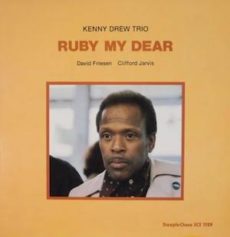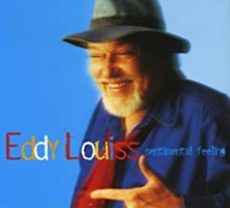
Daily Dose Of Jazz…
Robert Havens was born May 3, 1930 to a musical family in Quincy, Illinois and began studying violin and trombone at age seven and played both instruments throughout his school years. Landing his first professional job with a local dance band at age 12, by 16 his talent as a trombonist was recognized earning him a scholarship from the Interlochen Music Camp in Michigan and he held the first trombone chair in the school’s 250 piece concert band. He later held the first trombone chair in the Quincy Symphony while also playing in many popular dance groups in Illinois.
Leaving Quincy in 1955 after serving in the Illinois National Guard as a bandsman during the Korean War, Bob toured with the Ralph Flanagan Orchestra. In 1956, he joined George Girard’s Dixieland Band at the Famous Door in New Orleans, Louisiana where he met his idol, Jack Teagarden.
In 1957, Bob joined Al Hirt at Dan’s Pier 600 on Bourbon Street when Hirt formed his very first band. The front line consisted of Hirt, Havens and Pete Fountain. During his time in New Orleans, he recorded albums for Good Times Jazz and Vic labels with the Girard band, and on Verve and Audio Fidelity with Hirt. He also recorded about a dozen albums for the Southland label with many other New Orleans musicians.
Bob stayed with this group until 1960 when he was persuaded to move to the West Coast and join the Lawrence Welk Orchestra as a featured soloist on their weekly TV series. His tenure with this show lasted for 23 years until the show ended in 1982.
Following Welk, he continued as a freelance professional, working often with the Bob Crosby Bob Cats and the Benny Goodman Orchestra, then led by clarinetist Peanuts Hucko. From 1985 to 1995, Havens played with the Great Pacific Jazz Band along with Bob Ringwald (lead vocals/piano), Don Nelson (saxophone), and Zeke Zarchy (trumpet).
In 2005, he performed with the North Carolina Pops Orchestra at Campbell University with fellow Welk star Ava Barber in a benefit concert raising money for victims of Hurricane Katrina. Trombonist Bob Havens returned home to Quincy, and continued to record and appear at jazz festivals and concerts throughout the world.
More Posts: bandleader,history,instrumental,jazz,music,trombone

Requisites
The Kenny Drew Trio steps into the spotlight for this morning’s discussion with their 1980 album, Ruby My Dear (SteepleChase Records SCS 1129). This was Kenny’s fourth release on the Danish label using a trio format, the first three are Dark Beauty (1974), If You Could See Me Now (1975), and Morning (1976). Here, Drew’s working with David Friesen on bass and Clifford Jarvis on drums. My copy used in this report is the US Stereo album sharing the Danish catalog number.
Kenny began playing the piano at age five, and later attended the High School of Music & Art. His first recording was with Howard McGhee. He’s also worked with John Coltrane, Buddy DeFranco, Johnny Griffin, Coleman Hawkins, Charlie Parker, Buddy Rich, Dinah Washington, and Lester Young among others. Drew also led his own groups throughout the fifties and has an extensive discography as a leader and sideman. Bassment, an uptempo original by Kenny launches Side One with an exciting introduction into a spirited melody. The leader’s opening solo sizzles right from the start, then David ends with an effective climax into the threesome’s closing chorus.
Thelonious Monk composed some of the most evocative standards in jazz and Ruby My Dear is one of his most beautiful songs. It’s named for Monk’s first love, Rubie Richardson, and was originally released in 1947, then later reissued on Genius of Modern Music, Volume 1 (1952). The trio starts the melody speaking elegantly, then Drew provides a solo of serene beauty into an intimate coda. Gentle Rain possesses a Bossa Nova flavor as originally intended by its creator, Luis Bonfá who wrote it with Matt Dubey. It premiered in The Gentle Rain that Bonfá scored with Eumir Deodato a year later. The group’s theme is sweet and lovely. Kenny swings softly on the only reading with an enchanting reading.
Side Two starts with Kenny’s Ending. This very pretty ballad opens with a short introduction by the trio preceding an elegant melody. Drew cultivates a very beautiful tone into a memorable interpretation. Friesen delivers the closing performance with easy assurance, ending with a tranquil finale. Sunspots by Austin Wells gets underway with a very pretty introduction of gentle cascades on the piano, gradually growing to a lively frolic on the opening chorus. Kenny starts the solos with a lengthy interpretation that’s a work of art. David steps in next for a rousing statement of effortless artistry. Clifford has an invigorating exchange with the leader and bassist on a breathtaking finale ahead of a soft climax.
Ruby My Dear was produced by SteepleChase Records’ Founder Nils Winther and the man behind the dials is Freddy Hansson. Both men put their talents to great use because the sound quality is astonishing with superb fidelity, placing the trio in your listening room to fill your ears with excellent music. If you’re seeking some outstanding bop for your library, I enthusiastically offer for your consideration, Ruby My Dear by The Kenny Drew Trio. It’s a perfect introduction to Drew’s music for newcomers, and an exceptional companion to his other three albums as well!
~ Dark Beauty (SteepleChase SCS-1016), Genius of Modern Music, Volume 1 (Blue Note BLP 5002), If You Could See Me Now (SteepleChase SCS-1034), Morning (SteepleChase SCS-1048), Ruby My Dear (Blue Note 549) – Source: Discogs.com ~ Kenny Drew, Ruby My Dear – Source: Wikipedia.org © 2021 by Edward Thomas Carter
More Posts: choice,classic,collectible,collector,history,instrumental,jazz,music,piano

Daily Dose Of Jazz…
Eddy Louiss was born on May 2, 1941 in Paris, France. Playing in his father Pierre’s orchestra in the 1950s, his primary instrument became the Hammond organ. The original family name was Louise, which he changed to the current spelling. As a vocalist, he was a member of Les Double Six of Paris from 1961 through 1963.
For 13 years, between 1964 and 1977, Eddy played with leading French musician Claude Nougaro. Leaving Nougard, he ventured out on a solo career. He went on to work with Kenny Clarke, René Thomas, and Jean-Luc Ponty. In 1971 he was a member of the Stan Getz quartet with René Thomas and Bernard Lubat. The quartet recorded the 1971 Getz album Dynasty.
After suffering artery problems, Louiss had his left leg amputated in the early 1990s, following which he made few public appearances.
In duet, he recorded with pianist Michel Petrucciani in 1994, and accordionist Richard Galliano in 2002. His later recordings, such as Sentimental Feeling and Récit proche, combined jazz with rock and world music.
Hammond organist and vocalist Eddy Louiss, who was awarded the Prix Django Reinhardt in 1964, passed away on June 30, 2015 in Poitiers, France.
More Posts: bandeader,history,instrumental,music,organ,vocal

Daily Dose Of Jazz…
Floyd “Candy” Johnson was born on May 1, 1922 in Madison, Illinois and started on drums before moving to saxophone, with Ben Webster being his biggest influence. His professional career began in St. Louis, Missouri where he was a member of a group led by Chuck Finney. He attended Wilberforce University until the draft intervened but after his service, he played in bands led by Ernie Fields, Tiny Bradshaw, and Andy Kirk. With the Kirk orchestra he recorded for Decca Records.
Johnson preferred candy to alcohol, so a band member started calling him Candy, and the moniker stuck. In Detroit he started a band called the Peppermint Sticks. One musician recalled that the band dressed in candy-striped suits, and sometimes Johnson tossed peppermint sticks to the crowd.
1951 saw him as a member of the Count Basie Orchestra, recording with Basie for Clef Records before working in more of a rhythm and blues vein with Bill Doggett. The band had hits with Blip Blop, Honky Tonk, and Night Train. Leaving Doggett in the 1960s he went on to study music at Bowling Green State University.
By 1974, Candy was playing with the Duke Ellington Orchestra, the Count Basie Orchestra, and his friend Clark Terry. During a visit to New York City, he recorded with Helen Humes and Roy Eldridge. A year later, he accompanied the New McKinney’s Cotton Pickers at the Bix Beiderbecke Festival in Iowa.
Saxophonist Candy Johnson, who retired from performing, moved to Toledo, Ohio and taught at local schools, passed away on June 28, 1981 in Framingham, Massachusetts.



